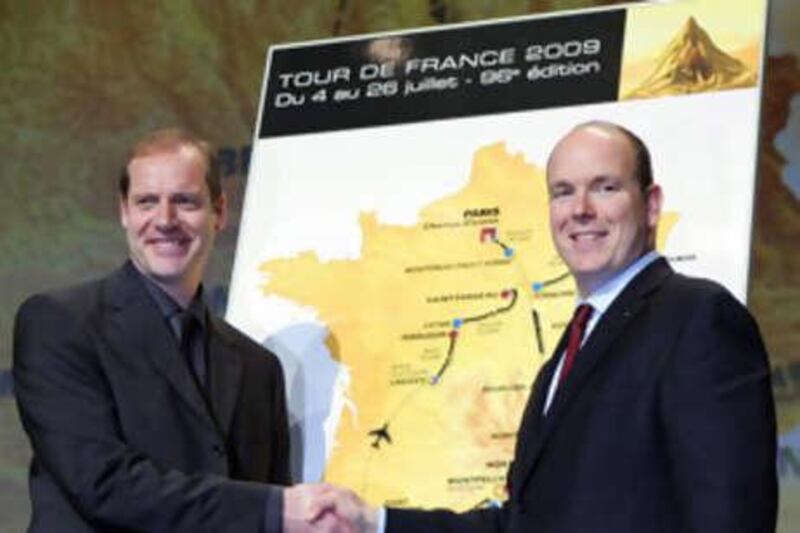PARIS // The 2009 Tour de France will have a tough mountain stage on its penultimate day in a tradition-busting innovation that could complicate Lance Armstrong's possible return. The route, aimed at keeping suspense going to the end of the 106-year-old event, was unveiled today in Paris. The steep climb up the notorious Mont Ventoux may pose a particular challenge for the seven-time Tour champion Armstrong, who has never won on the rocky slopes of the fabled ascent in the south of France.
"The Ventoux will blow things up," predicted Jean-Francois Pescheux, who helped design the route as director of competitions for ASO, the company that organises the Tour. Armstrong is making a comeback after three years of retirement, but it is still unclear whether he will race in the Tour. Often, the Tour finishes with a time trial on the penultimate day, deciding the race winner before what is largely a ceremonial ride into Paris on the last day.
The three-week 2009 Tour will cover 3,445 kilometres (2,141 miles) and scale 20 major mountain climbs - slightly less than the average of 22-23 climbs in recent years. Mont Ventoux will be the 20th of the 21 stages. After 19 days of racing, the climb on which a British rider died in the 1960s promises to be a test for tired legs and minds, and possibly decisive in selecting the winner. From its July 4 start in the principality of Monaco, the Tour will go across flatlands of the Mediterranean coast to Barcelona, Spain, for the first week and then head sharply uphill into the Pyrenees.
The first Pyrenean stage, to the Arcalis mountain station, is also the longest of this year's Tour, at 224km (139 miles). The long ride and steep uphill finish should give the first clear indication of the form of the favourites. After two more trying but likely not decisive days of ascents in the mountains that form the border between France and Spain, the Tour then goes through central and eastern France before tackling the Alps.
Three days of climbs in those mountains, including the Tour's high-point at 2,473 metres (8,113 feet) on the Grand Saint-Bernard pass, followed by a time trial should further separate out the field, ahead of the race going into a final Mont Ventoux nail-biter. Armstrong initially said when he announced his comeback last month that he would aim at an eighth Tour victory, stunning the cycling world.
But a less-than-enthusiastic response from Tour organisers and renewed discussion in France on the question of whether Armstrong doped on way to his record seven wins from 1999-2005 - he insists he did not - are now reportedly giving the rider pause for thought. He has said that he will race the Giro d'Italia in May but is sounding less certain of riding the Tour in July. The Tour director Christian Prudhomme again today offered only a guarded response to the prospect of Armstrong's return to the race, saying it would be "neither a good nor bad thing" for the Tour.
Pescheux expressed doubts that the 37-year-old cyclist could come back after three years away from cycling. "I think he will rapidly realise that things are not the same," Pescheux said. Pescheux also added, however, that Armstrong always managed to adapt to the yearly route changes at previous Tours and said the Texan should be able to do so again in 2009 should he chose to race. For 2009, organisers have revived a feature, a team time trial, that had fallen out of favour in recent years. The highly technical discipline will be run on Day Four.
But the relatively short distance, 38km (23.6 miles), should not open huge time gaps between the race favourites. *AP





